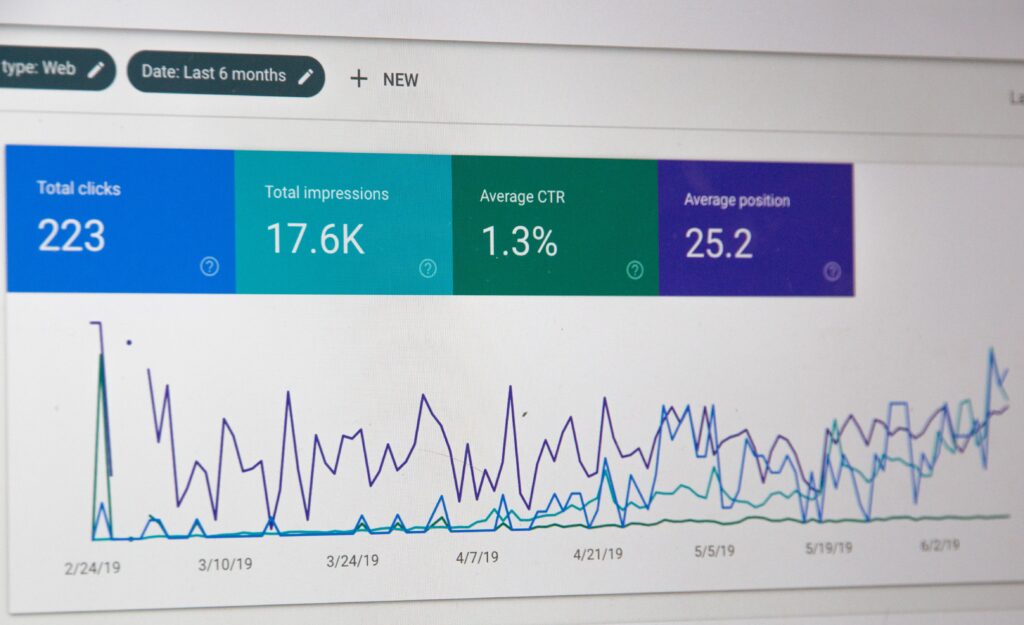You’ve probably heard of the term “CTR” before, but what does it mean? This blog post is for you if you’ve ever wondered what CTR is and why it’s important.
Click-through rate or CTR is important because it helps you measure the effectiveness of your online marketing campaigns and optimize them for better results.
The Definition of Click-Through Rate (CTR)
Click-through rate (CTR) is a metric that measures how often people click on a link or call to action (CTA) after seeing it. CTR measures the percentage of people who click on a link to your website after seeing it in online advertisements. These advertisements might come through Google Adwords, search engine results, email content, or banners. In other words, CTR measures your marketing campaign’s effectiveness at getting people to take action.
Why Do Click-Through Rates Matter?
A high CTR is what you want! It means that your campaign is performing well and that people are interested in what you offer. A high CTR can lead to more website visitors, higher conversion rates, and, ultimately, more customers. On the other hand, a low CTR can mean your campaign is not reaching its full potential.
How Do I Calculate Click-Through Rate?
CTR is a metric that measures the number of times a link or call-to-action (CTA) is clicked, divided by the number of times a user has viewed that advertisement.
The CTR formula is pretty simple: the number of clicks divided by the number of impressions (number of times your ad was viewed). So, for example, if your ad receives 500 impressions and ten people click on it, then your CTR would be 2%.
Some factors that can affect your CTR include
- The quality of your content. If your content is relevant, exciting, and has engaging headlines, people are more likely to click on it.
- The placement of your ad. Ad placements above the fold (the top part of the page visible without scrolling) tend to have higher CTRs than those below the fold.
- The design of your ad. Ads with attention-grabbing images and bright colors tend to perform better than those with only text.
- The relevance of your CTA. If your CTA is relevant to the content of your ad, your target audience is more likely to click on it.
- The timing of your campaign. The time of year, day of the week, and even time of day can affect your CTR.
By understanding what factors influence CTR, you can update your campaigns to boost their performance.
4 Tips To Improve Your CTR
1. Write Compelling Titles and Meta Descriptions
The text surrounding your links and CTAs should be clear, concise, and persuasive. After all, if users can’t understand what you’re trying to say or why they should click on your link, they won’t bother. So take the time to write captivating titles and meta descriptions that accurately reflect your linked page’s content and compel users to take action.
2. Use Visual Elements
Ensure your links and CTAs include strong visuals that accurately reflect the content of your linked page. People are visual creatures, so attractive visuals are a great way to grab their attention and get them to click on your links. Just make sure not to go overboard—too many visuals can be just as off-putting as too little.
3. Create a Sense of Urgency
Users who feel they need to act fast are more likely to click on your links. So try to create a sense of urgency by using phrases like “limited time only” or “while supplies last.”
This tactic can excite your audience to take action quickly. However, use this strategy wisely. Don’t make your customers or clients feel pressured into taking action. If your audience feels pressured, this could make them feel negative about your business and service, which will harm your CTR.
4. Test, Test, Test
A critical step to finding out what works and what doesn’t is to test different elements of your campaigns and see how they affect CTR. Try different headlines, descriptions, subject lines, email messages, visuals, and calls to action to see what gets users to take action. And remember to track your results so you can continue to improve your CTR over time.
These tips boost your CTR and get more out of your marketing campaigns.
How Important Is CTR for SEO?
There is no doubt that CTR is important for SEO (Search Engine Optimization). A high CTR means your site is relevant to the keyword customers are searching for. It also indicates that your title and meta description is compelling enough to make people want to click through to your site. But just how important is CTR?
The answer depends on several factors, but a high CTR will generally be better for your SEO than a low CTR. For example, a study by Chitika found that the top result in Google’s search results has an average CTR of 33%. In comparison, the second result has a CTR of 18%. That means that if your site ranks in the top spot, you’re more likely to get people to click on your link.
CTR is important for getting people to visit your site. It is also a ranking factor that Google considers when determining where your site should appear in the search results. So if you want to improve your SEO, improving your CTR is an excellent place to start.
Improve Your CTR and Watch Revenue Increase
In summary, CTR is the percentage of people who click on your ad or link out of the total number of people who see it. It’s a key metric for determining the success of your online marketing or email campaign’s success, and it can significantly impact your bottom line.
It’s easy to see why increasing CTR is critical to your website or social media marketing campaigns. If you want to boost your online marketing efforts, start by focusing on your CTR. Improving your CTR is a surefire way to get better results from your campaigns, increase your customer base and grow your business.

